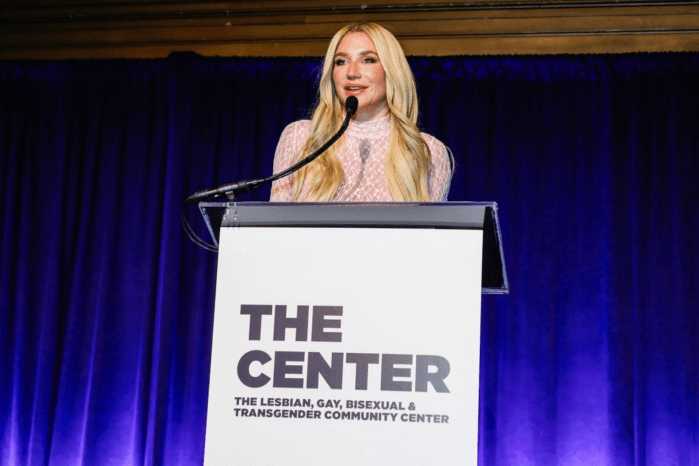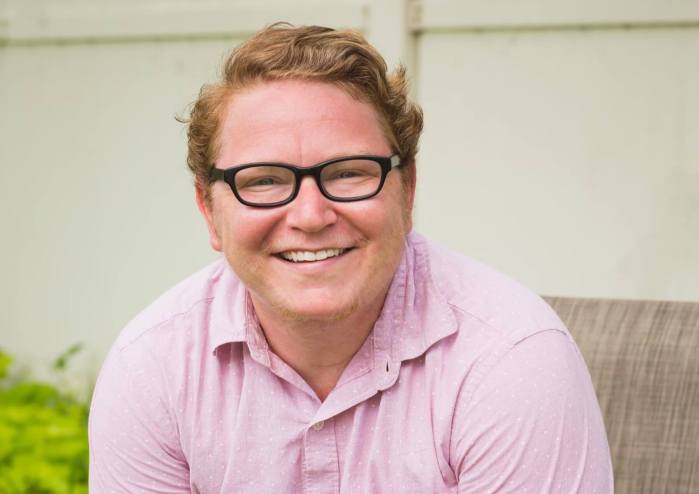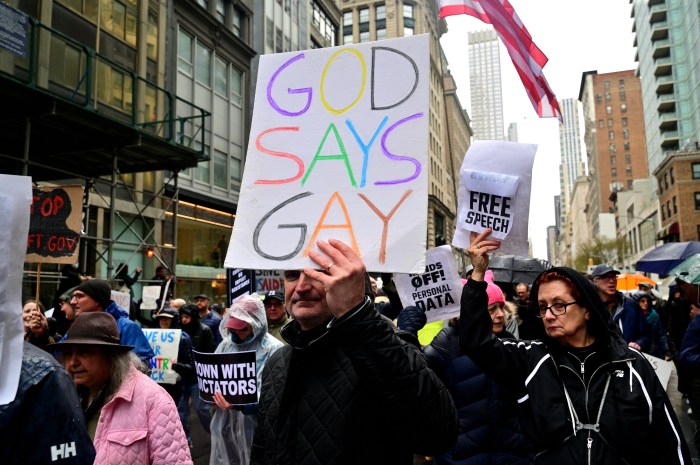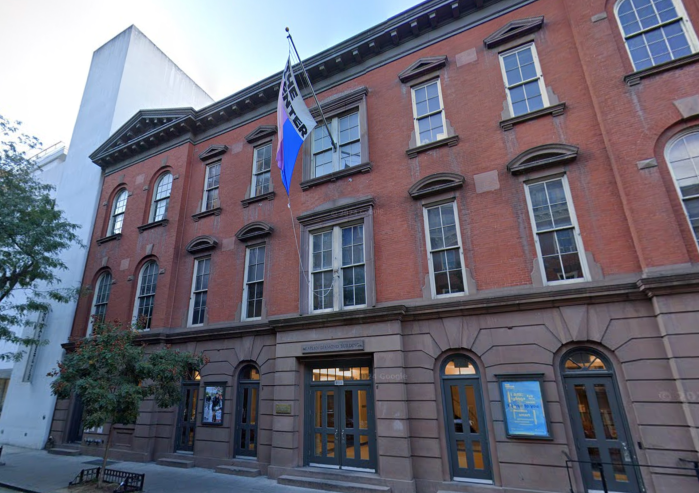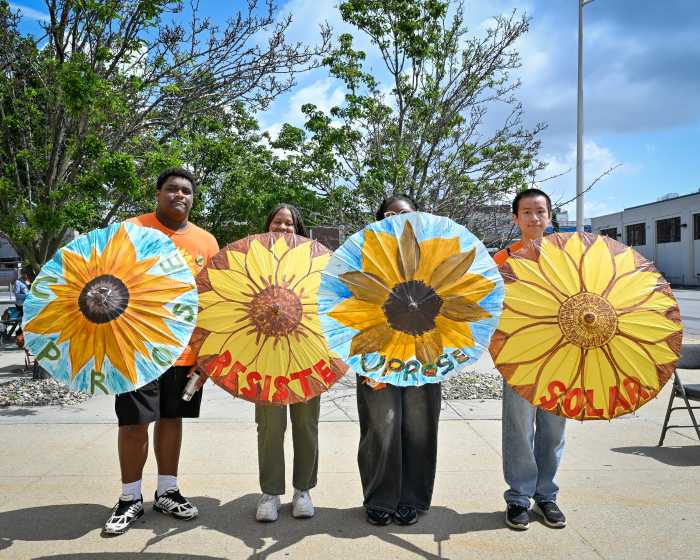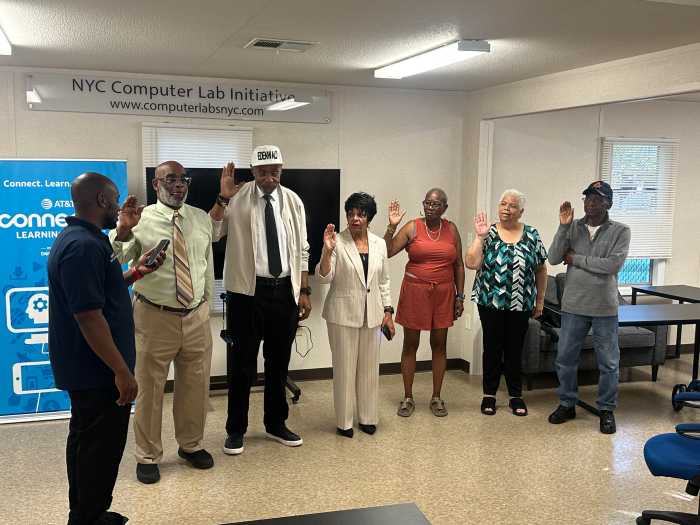Marriage Equality Gains, Ottawa to Madrid, Boston to Johannesburg
Since Election Day in 2004, on which 11 states, by wide margins, enacted constitutional bans on same-sex marriage, the gay community in the U.S. has felt decidedly on the defensive in the struggle for equality. According to the Human Rights Campaign, 38 states have explicit legislative bans on gay marriage, another three define marriage as the union of a man and a woman, and 18 states have imposed constitutional bars on marriage between two men or two women. Only one state of course, Massachusetts, has legal same-sex marriage, and the District of Columbia and four states, New York and New Jersey included, have no explicit legislative or constitutional impediments to gays marrying.
Despite the setbacks, the public education, legislative, and legal efforts to move toward marriage equality continue—by necessity, too often in a reactive fashion through expensive, energy-consuming efforts to guard against right-wing drives to further enshrine inequality in constitutions and public policy. Yet, there are also more affirmative efforts, with a marriage ruling due from the Washington State Supreme Court any day now, and cases working their way up the court systems in New York and New Jerseys, among other places, where victories at the highest courts are not out of the question.
In four jurisdictions worldwide this year, there were clear victories for gay marriage. Closest to home, Massachusetts marriage activists beat back an effort to have a constitutional amendment placed on the 2006 state ballot replacing same-sex marriage with civil unions. The Bay State still faces the risk of a setback—in the form of a different ballot question in 2008—but by then gay and lesbian couples will have been marrying there for four years.
In Canada, two years after the nation’s largest provinces moved toward marriage equality, the Liberal government of Prime Minister Paul Martin finally enacted a federal gay marriage statute. As Canada faces a national election in January, that advance is very much a part of the political debate.
In Spain, the Socialist government of José Luis Rodríguez Zapatero, swept into office in the wake of the former prime minister’s mishandling of the May 2004 terrorist attacks, made good on its promise to enact a gay marriage law—in a sharp rebuke to political muscle-flexing by Pope Benedict XVI in Rome. In South Africa, the Constitutional Court, that nation’s highest, ruled that the constitutional ban on government sexual orientation discrimination and its equality requirement meant that gay and lesbian couples must be allowed to marry. Parliament was given one year to conform South African law.
Important legal principles of equality—enunciated in a February New York City ruling since overturned on intermediate appeal, in Massachusetts, in numerous Canadian provinces, and in South Africa—establish no direct precedents for American and New York State courts. But that is not to say that they have no impact. As the highest courts in democracies around the world articulate similar theories based in a common principle of equal protection of the laws, it becomes harder and harder for judges to cling, with any degree of intellectual integrity, to outdated notions of what marriage means in civil society.
The victories in Massachusetts, Canada, Spain, and South Africa are milestones for all of us.
Defending the Bay State Win
The historic 4-3 ruling by the Massachusetts Supreme Judicial Court in November 2003 proved only to be half the battle. In a case brought by the Gay & Lesbian Advocates & Defenders (GLAD), a Boston public interest law firm, argued by attorney Mary Bonauto on behalf of seven plaintiff couples, the famed Goodridge v. Department of Public Health ruling found that the equal protection of the law and the liberty interest in the right to marry included the rights of gay and lesbian people to marry the person of their choice.
The Massachusetts Legislature was given 180 days to comply with the ruling and in hearing a special appeal from that body’s leaders, the Court ruled subsequently that civil unions—the response to a similar, though clearly distinguishable 1999 ruling from the Vermont Supreme Court—would not suffice in this case.
Even before gay marriages began in May 2004, the Legislature moved toward a constitutional amendment override of the ruling. On March 29 last year, sitting in a special joint-session Constitutional Convention, the 200 members of the State House and Senate gave preliminary approval to a 2006 ballot referendum that would have replaced gay marriage with civil unions. The vote was 105 to 92, but a second vote in the Legislature elected in November 2004 was required before the ballot question would be approved.
Still, gay marriage advocates faced a daunting task. Though the first tally was close, some of those who opposed the referendum did so not because they supported gay marriage, but rather because they were so opposed to gay partnership rights that they rejected the civil union alternative.
The pro-marriage forces in Massachusetts are led by MassEquality, a coalition of several dozen groups formed in an effort to defend the 2003 Goodridge decision and helmed since its inception by Marty Rouse. The group launched an unprecedented door-to-door campaign in the fall of 2004, for both the September primary and the November general election, to defend pro-marriage incumbents and defeat those opposed to gay equality.
In opposition to MassEquality were both the Republican governor, Mitt Romney—who has successfully invoked a 1913 statute passed to protect the racist miscegenation laws of other states in order to block out-of-state gay marriages—and Boston’s Roman Catholic Archdiocese, whose credibility was nearly in tatters because of the priest sex abuse scandal.
MassEquality achieved remarkable success in the 2004 elections. Every pro-gay legislator won re-election and in open contests, there was a net pick-up of two seats. “We are psyched,” Rouse said at the time, “but we still have a lot of work to do.” Noting that the group’s tally had supporters of gay marriage down by 16 votes pre-November, he said there was still a 14-vote deficit. “It is not a done deal,” Rouse said of the prospects of beating back the amendment on its second reading.
But pro-gay prospects continued to improve throughout 2005. In April, special elections were held to replace three retiring legislators, all of them gay marriage opponents. In each contest, a supporter of marriage equality was elected. A fourth special election in August also yielded a win for a marriage advocate.
The message was becoming clear—Massachusetts politicians were paying no price for advocating full equality for gay and lesbian couples. And after more than a year of living with the reality of gay marriage, polls showed an increasing majority of Massachusetts residents in support of the new status quo.
The fateful second vote by the Legislature on the 2006 amendment question wasn’t even close. This September, just 18 months after a clear majority of representatives and senators approved a ballot question to overturn gay marriage, the Constitutional Convention turned down the effort in its second reading by a lopsided 157-39 vote.

“It was a tremendous, tremendous victory,” Rouse said. “We have built the strongest grassroots movement for equal rights in this state’s history.”
Gay marriage advocates in the Bay State, however, are not yet out of the woods. In the past month, the secretary of state certified roughly twice the required 65,000 signatures to begin the process of putting a different amendment on the ballot in November 2008. That effort must also be endorsed twice by the state Legislature in two consecutive sessions, 2006 and again in either 2007 or 2008. The hurdle for legislative approval of such a citizen-initiated effort, however, is lower—only 25 percent, or 50 members, of the combined House and Senate.
The 2008 amendment effort would be more draconian—it eliminates gay marriage, but offers no substitute gay partnership recognition; in fact, it could threaten all such rights. Though supported by Romney, who recently announced he will not seek re-election next year, the elimination of gay marriage rights after a four-year period of availability could well be too harsh to attract a majority of voters. There are already indications that some legislative leaders may even move to block a 25 percent vote on Beacon Hill.
Meanwhile, the Supreme Judicial Court heard oral arguments in October in response to a GLAD lawsuit challenging the 1913 miscegenation law that blocks gay marriages in Massachusetts by out-of state couples. Both sides are awaited a ruling.
In late November, Rouse announced that he was leaving MassEquality to become national field director for the Washington-based Human Rights Campaign, the nation’s largest LGBT group. “I look forward to taking our model to other state groups fighting for equality,” he said. The group’s political director, Marc Solomon, has been tapped to replace Rouse.
Canada Completes Three-Year Journey to Marriage
Beginning in the summer of 2002, courts in Canada’s three largest provinces—Ontario, Quebec, and British Columbia, which account for more than two-third’s of the nation’s population—issued rulings that found that under the Charter of Rights gay and lesbian couples are entitled to marry. In each of the first rulings out of these provinces, the courts “suspended” implementation of their findings to allow the Canadian Parliament in Ottawa to address the questions raised.
In June 2003, however, the Court of Appeal for Ontario became the first appellate court in the world to order a government to open up the full status of legal marriage to same-sex couples without any delay for legislative consideration. In a forceful decision declaring that the right to marry is a matter of basic human dignity, the court, Ontario’s highest, issued an order requiring the Toronto city clerk to issue marriage licenses to the same-sex couples who filed the lawsuit. In the weeks leading up to the historic U.S. Supreme Court ruling throwing out this nation’s remaining sodomy laws, gay marriage became a fact in Canada.
Marriage in Canada is defined under common law—-nationwide law made by the courts—and both the British Columbia and Ontario appeals courts took the position that the common law definition must be changed to “the lawful union of two persons to the exclusion of all others” without specifying the genders of the two people. The highest courts in British Columbia and Quebec followed the Ontario example and ordered immediate issuance of gay marriage licenses within months.
By the fall of 2003, the Canadian government then led by Liberal Prime Minister Jean Chrétien, which had initially defended the heterosexual marriage status quo in the provincial courts, indicated that it would not appeal the marriage rulings to the Canadian Supreme Court. Chrétien also had the option of trying to amend the federal Charter of Rights, but by 2003 public opinion in Canada was sharply divided, with a near-majority in some polls supporting the reform, so the parliamentary super-majority necessary for an amendment seemed unlikely. The prime minister, instead, committed to move toward a vote in Parliament.
Chrétien did, however, turn to the Supreme Court to clarify certain issues raised by the provincial courts, a process that took up most of 2004. During that time, Manitoba, Nova Scotia, Saskatchewan, and the Yukon Territory joined the three pioneering provinces in extending marriage rights to gay and lesbian couples. Roughly 85 percent of the Canadian population now lived in jurisdictions where same-sex marriage was legally available. The western province of Alberta formed the heart of the opposition to marriage equality in Canada.
The Supreme Court deliberations were complex and reflected some measure of stalling on the part of the Liberals, whose leader Chrétien retired before his term was up, handing the government’s reins over to Paul Martin. The most important finding by the Court was that the definition of marriage in Canada was under the exclusive jurisdiction of the federal Parliament, which effectively foreclosed Alberta’s hopes of opting out through the exercise of the nation’s “notwithstanding clause,” which gives provinces some measure of autonomy.
By this time, Martin was already moving his government toward a parliamentary vote, though financial scandals involving his party—which did not implicate him personally—began to erode the Liberals’ tenuous grip on Parliament. Gay marriage advocates worried that the Liberal government would not last long enough to allow a vote on the measure. Finally, on June 28 of this year, Martin got the marriage bill through the House of Commons by a vote of 158 to 133. In a more pro-forma vote, the Senate approved the law several days later. Public opinion polls at the time the law was enacted favored gay marriage by a 55 to 39 percent margin.
The opposition Conservatives, however, seem unmoved by the strong public support for marriage equality. In late November, Martin finally lost a no-confidence vote and national elections are scheduled for January 23. Tory opposition leader Stephen Harper is making the government’s opening of marriage to same-sex couples a centerpiece of his campaign. The Conservative leader said that if elected, he will allow a free vote in Parliament to reverse this year’s law. Part of the election debate centers on what response the Canadian Supreme Court would have to efforts to undue the national consensus on gay marriage.
Rapid Fire Progress in Spain
In a political shift of enormous significance, Spain legalized same-sex marriage on June 30 of this year, despite the vehement opposition of the Vatican and bishops of the overwhelmingly Roman Catholic nation.
The Socialist-led Congress of Deputies, Parliament’s lower house, overrode the Senate, which tried to block their earlier pro-marriage vote, and defied the once-dominant Catholic Church by voting 187-147, with four abstentions, to begin issuing marriage licenses to same-sex couples. Four days later on July 4, gay and lesbian couples across Spain lined up to get married, swelling the lines inside Madrid’s Civil Registry building.
Prime Minister José Luis Rodriguez Zapatero said during the parliamentary debate that the legislation was “a small change in wording that means an immense change in the lives of thousands of citizens. We are not legislating, ladies and gentlemen, for remote unknown people. We are expanding opportunities for the happiness of our neighbors, our work colleagues, our friends, our relatives.”
Zapatero added, “We were not the first, but I am sure we will not be the last. After us will come many other countries, driven, ladies and gentlemen, by two unstoppable forces—freedom and equality.”

At Madrid’s Gay Pride Parade on Sunday, July 3, more than 100,000 celebrants hailed leading members of Zapatero’s Socialist Workers Party who addressed the throngs. Opinion polls after the law’s enactment indicate that Spaniards support same-sex marriage by a margin of 62 to 30 percent. As the debate over the issue intensified over the last several months, the popularity of the ruling Socialists—who first came to power in May 2004 after the pro-U.S. Popular Party tried to blame the Al Qaeda attacks in Madrid on Basque separatists—grew.
In an audience with Pope Benedict XVI on July 5, Madrid’s Cardinal Antonio Rouco Varela denounced the new law. Spanish society, Rouco said, is being tempted by proposals for radical secular lifestyles that “not only deny the faith, but also our very humanity, as can be seen in the recent legislation on marriage.” The new pontiff has called on Catholic marriage officials in Spain to quit their jobs on religious grounds rather than marry gay and lesbian couples.
Spain is the third European country to legalize same-sex marriage after the Netherlands and Belgium. The Spanish law goes beyond the Dutch and Belgian laws by also allowing gay couples to adopt children, still a sticking point in much of Europe. Holland now allows for gay adoptions and Belgium is reconsidering its prohibition. Neither Holland nor Belgium sanction marriages for same-sex couples from abroad.
In his speech celebrating the marriage law’s passage, Zapatero said, “Today, the Spanish society answers to a group of people who for many years have been humiliated, whose rights have been ignored, whose dignity has been offended, their identities denied and their liberty oppressed. Today the Spanish society grants them the respect they deserve, recognizes their rights, restores their dignity, affirms their identity, and restores their liberty.
Big Stride in South Africa
The most recent victory for gay marriage came on December 1, when the highest court of South Africa ruled that the continued exclusion of same-sex couples from legal marriage violate two provisions of the national Constitution when considered in combination—the requirement of equality before the law and the ban on sexual orientation discrimination by the government.
A sweeping decision by Justice Albie Sachs treated the issue in this case as a logical step after a series of rulings by the Court striking down various forms of unequal treatment of South African gay people. When Nelson Mandela became president in the wake of the fall of the former apartheid regime, South Africa adopted a new Constitution that became the first in the world to bar sexual orientation discrimination.
Although the Court was unanimous in finding the constitutional violation, it was not unanimous as to the remedy. Writing for all but one member of the Court, Sachs found it would be appropriate to suspend the effect of the Court’s ruling for one year to allow the Parliament to adopt appropriate legislation. One justice disagreed with this approach. Justice Kate O’Regan argued that successful litigants are entitled to relief if it is within the authority of the Court to give it. Since the current “common law” definition of marriage in South Africa is judge-made law, she argued, the Court could change it by simply modifying the definition to be gender-neutral.
Sachs devotes substantial attention to summarizing the Court’s prior gay rights decisions—striking down the sodomy law, requiring the government to recognize same-sex partners for immigration purposes, allowing for joint adoption of children by same-sex partners, and requiring access to pension rights for partners of public servants among them. The common denominator was the growing recognition that the equality and non-discrimination guarantees in the South African Constitution clearly required treating gay people as full citizens with the full panoply of rights.
Sachs, who is 70, has a long record of human rights activism in South Africa. As a young attorney in the late 1950s, he became an advocate for defendants charged under racist apartheid laws. His work compelled him to go into exile in 1966. In 1988, while working as a law professor and researcher in Mozambique, Sachs was blown up by a bomb placed in his car by South African security agents. He worked with the African National Congress in exile for years, and in 1994 was appointed to the Constitutional Court by Mandela.
His opinion reflects his deep commitment to universal human rights.
“Our Constitution represents a radical rupture with a past based on intolerance and exclusion, and the movement forward to the acceptance of the need to develop a society based on equality and respect by all for all,” he wrote. “Small gestures in favour of equality, however meaningful, are not enough. A democratic, universalistic, caring, and aspirationally egalitarian society embraces everyone and accepts people for who they are.
“Equality means equal concern and respect across difference. It does not presuppose the elimination or suppression of difference. Respect for human rights requires the affirmation of self, not the denial of self. Equality therefore does not imply a leveling or homogenisation of behaviour or extolling one form as supreme, and another as inferior, but an acknowledgement and acceptance of difference.
“The acknowledgement and acceptance of difference is particularly important in our country where for centuries group membership based on supposed biological characteristics such as skin colour has been the express basis of advantage and disadvantage… The test of tolerance is not how one finds space for people with whom, and practices with which, one feels comfortable, but how one accommodates the expression of what is discomfiting.”
Arthur S. Leonard and Andy Humm contributed to this reporting.
gaycitynews.com



